How to Create an Effective Digital Marketing Strategy in 2020

In this post, you’re going to learn exactly how to create and implement an effective digital marketing strategy, step-by-step.
In fact, it’s the same strategies I’ve used over the years to drive millions of visits to my website and client’s websites.
So, if you want to learn how to use digital marketing to grow your traffic, this strategy guide is for you.
What is a digital marketing strategy?
A digital marketing strategy is a plan of action that describes how to use one or more online marketing channels to reach your target audience. It has a list of steps and specific digital marketing goals.
Having a digital strategy is important because it will help you orchestrate the different online marketing strategies so that they all work towards achieving your business goals.
The person responsible to design and execute a digital strategy is the digital marketing manager of a company.
Together with his team, they will make sure that every marketing activity is part of your digital marketing plan.
DIGITAL MARKETING FULL COURSE

- Best way to learn digital marketing
- Become a successful digital marketer
- Increase your traffic in 60 days or less
- Trusted by more than 3000 students
How to create a Digital Marketing Strategy
These are the steps to follow to create an effective marketing strategy.
- Specify measurable business goals
- Identify your target audience
- Understand users needs and search intent
- Create a content marketing library
- Start with SEO as early as possible
- Explore paid advertising channels
- Use email marketing segmentation and automation
- Take advantage of new traffic sources
- Use retargeting and personalization
- Work on conversion optimization
- Evaluate and revise your strategy
1. Specify measurable business goals
The first step in creating a digital marketing strategy is to specify your business goals. In other words, to determine what you want to accomplish with digital marketing.
Any goals you set have to be measurable and well-defined. Everything in a digital marketing campaign is measurable (from start to finish) and you need to take advantage of this and form a digital marketing plan that has specific milestones and targets.
Some typical goals are:
While the above is a good starting point, they are still vague. A better version would be:
Raise brand awareness by:
- Increasing Facebook Followers to 10K
- Facebook Ad reach to 400K
- Getting brand mentions from high traffic websites
- Increasing YouTube video views by 10K
Increase organic traffic by:
- Getting higher rankings for keyword X
- Publishing new content targeting keyword Y
- Updating existing content that meets criteria A and B
- Run an email outreach campaign to get X links
A good way to come up with measurable goals is to use the top-down approach. Start by specifying your goals in business terms and then translate that to digital marketing goals.
Here is an example to understand this better.
Business goal: Increase sales to $50K per month from Google organic traffic.
Assuming that you make $1000 from every 5K visits you get from Google search, to get to $50K sales per month you’ll need to get around 250,000 visits from Google.
If your current traffic level is 140K Google visits per month, then your digital marketing strategy should include steps on how you can get from 140K visits to 250K visits.
A typical step could be, “Publish 3 new blog posts per week”, which needs to be broken down further to specify which/topics keywords the blog posts will target and what would be the expected outcome in terms of traffic increase.
Experienced digital marketing specialists know that this is not always easy to calculate because digital marketing is a dynamic industry and changes all the time. But, having a detailed plan will help you adjust your strategies so as to get closer to your goals as possible.
The bottom line is that you need to have a digital marketing plan to follow and not start running campaigns on different channels without knowing what you want to achieve.
It goes without saying that your plan has to be realistic, taking into account the competition and complexities of your industry.
Also, to be able to analyze data and make informed decisions, you first need to track it correctly and accurately so, having a good analytics system in place is more than essential.
2. Identify your target audience
The second step is to identify your target audience. In other words to specify in detail who you want to target with your campaigns.
Some marketers, place this as the first step in the process and this is not wrong. What is certain is that this is an exercise you need to perform in the early stages and before finalizing the next steps of your marketing strategy.
What does identifying your audience means? Specifying in detail the characteristics of people that might be potentially interested in your offerings.
In your audience identification, you should include things like:
- The countries/areas your potential customers live in
- Their age group
- Gender
- Educational background
- Marital status
- Family status
- Occupation
- Their interests
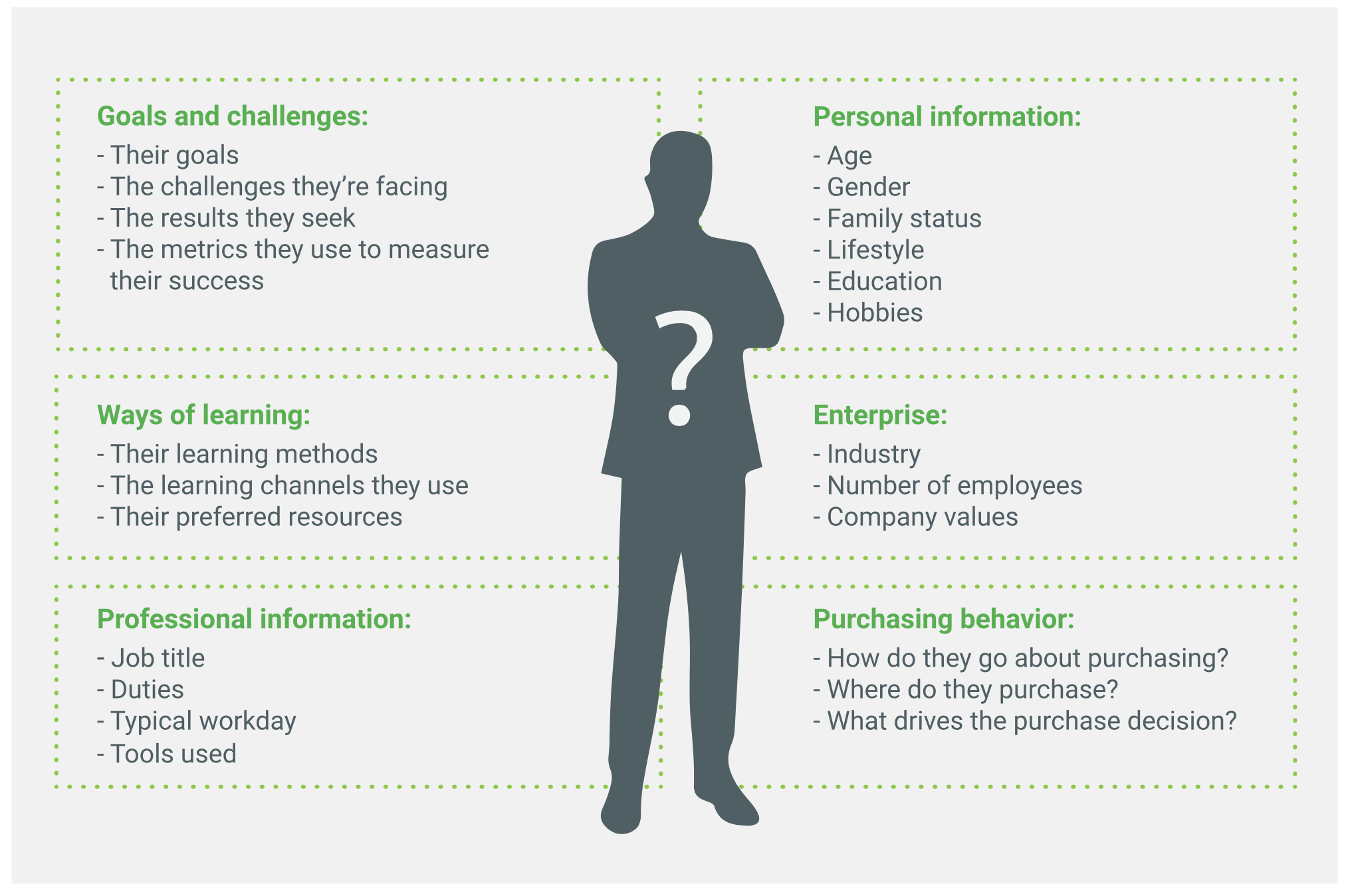
The exact details depend on the industry you’re in and the products/services you are trying to promote.
A good way to start crafting your buyer personas is to analyze the data you already have available.
Digg into your Google Analytics reports, Facebook audience insights, Google Ads reports, and start creating your customer profiles.
3. Understand users needs and search intent
Once you know the profile of your target customer, the next step is to use different techniques and try to understand their needs and how they express this when searching for information using a search engine or a social network.
There are two ways to approach this process. The first method is to take the typical digital sales funnel and identify what your customers might need at each stage.
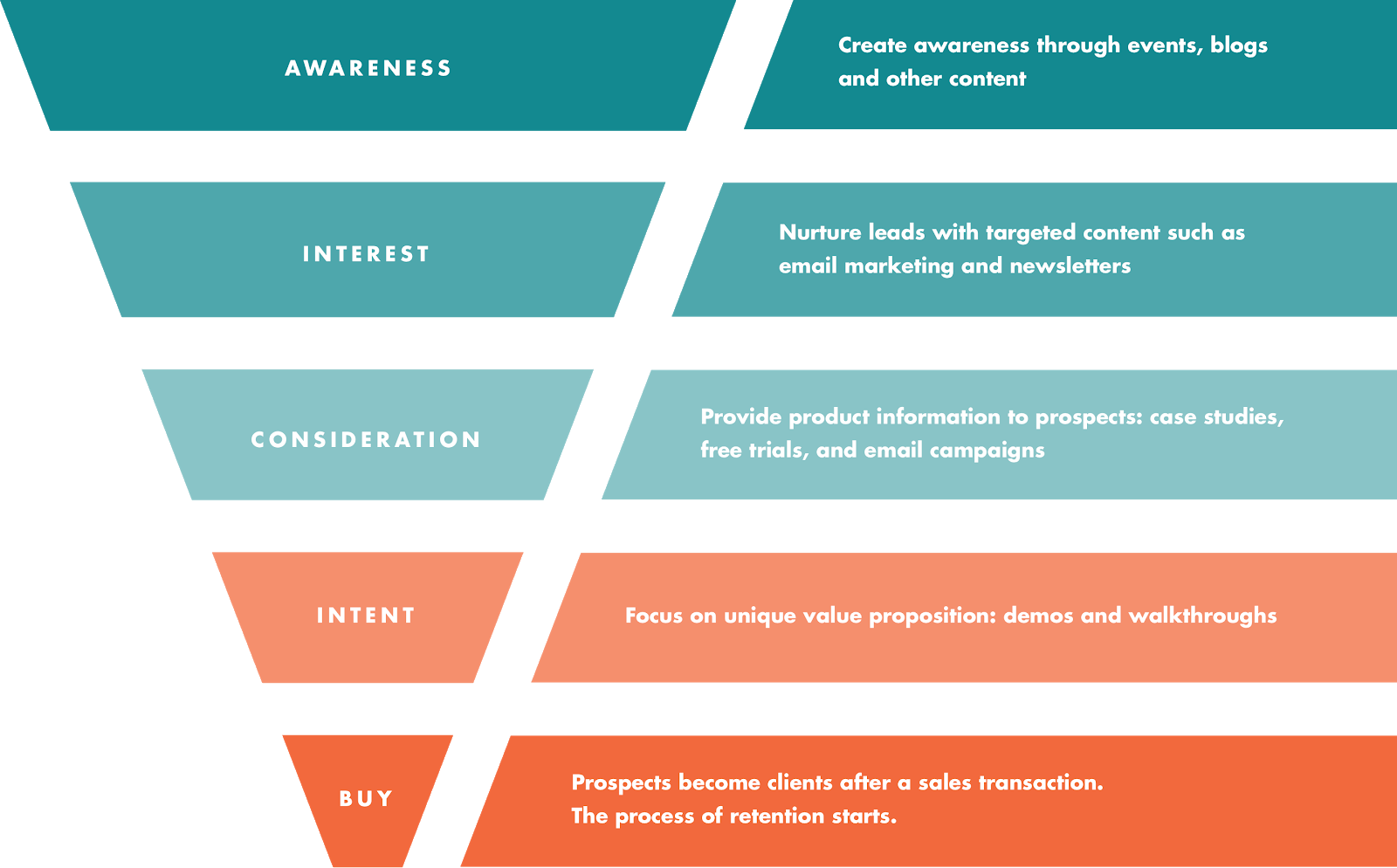
The second method is to take the different customer profiles created above, and come up with a separate sales funnel for each.
This is my recommended method because it makes it easier to set up and run dedicated digital marketing campaigns for each customer profile.
Let me give you an example to understand this better.
My agency provides digital marketing services to small businesses and we’re also offering online courses. People looking for services have a totally different profile than people looking for training.
There are also variations within the same segment i.e. beginners to digital marketing have different training needs than the more experienced marketers.
So, by analyzing each buyer persona separately, you can come up with a more accurate plan of how your content, products, or services can help them solve their problems and needs.
Search Intent
In the digital marketing world, the needs of users are expressed through search queries. When a user types a search query in Google, it has a specific intent and if your content/products or services do not satisfy it, your digital marketing strategy will fail.
That’s why it is important to perform keyword research from the very beginning and capture all topics, keywords, and phrases throughout the buyer journey, from awareness to conversion.
Social media networks don’t reveal the ‘searchers intent’, what happens then?
It’s true that users browsing Facebook may not have a specific intent in mind but they have a particular profile.
To increase your chances of targeting the right type of audience, you can analyze the profile of your search visitors (using Google Analytics) and using custom audiences to find matching audiences (Lookalike Audiences) on Facebook.
Always use any available data that you have as your starting point for research. The results will be more accurate than using data that is external to your website.
Resources to Learn More About Digital Marketing
4. Create a content marketing library
The next strategic step you need to make is to create a library of content assets. You know your audience and their needs, now it’s time to create various types of assets to use in your campaigns.
A digital asset can be a blog post, infographic, image, video, podcast, cover image, logo, and anything else you can publish on your website or social networks.
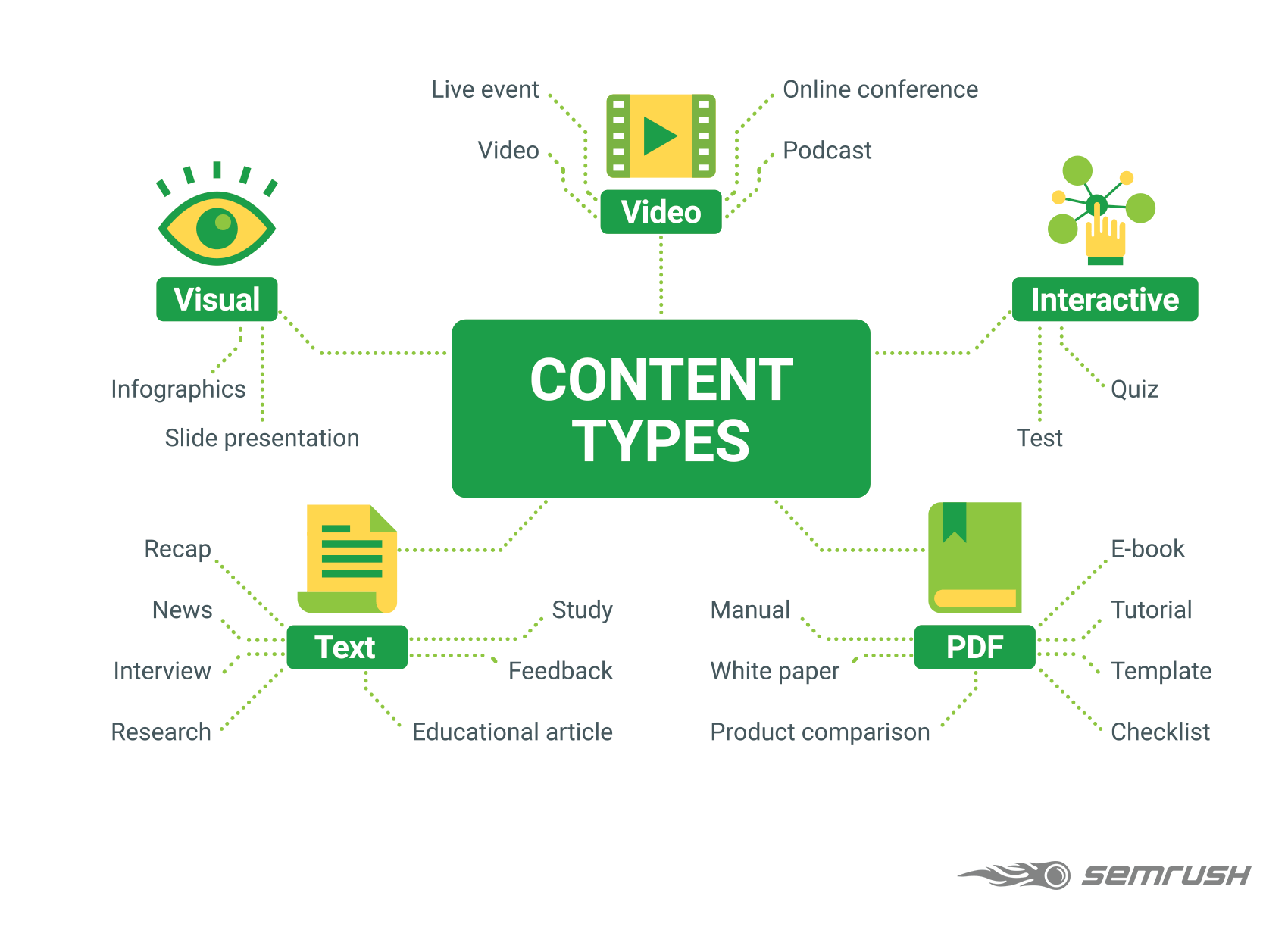
In the digital marketing world, this is what content marketing is all about. Content marketing is important because it’s the process used to decide what kind of content to create, when, and where to publish it.
I prefer to execute this step in the beginning and before running any campaigns because it’s more efficient to have a pool of content assets ready in advance rather than having to do this every time you’re about to start a campaign.
When you follow the steps in the order described in this guide (set goals, create customer personas, identify needs, and search intent), then you have all the information you need to work on your content assets.
It’s also easier to assign the content creation part to the different members of your team to work in parallel.

Resources to Learn More About Content Marketing
5. Start with SEO as early as possible
A strategic decision to make that can positively impact your digital marketing efforts is to start with SEO as early as possible.
SEO is one of the most effective digital marketing strategies but it has a caveat. It takes time to work.
Unlike other digital marketing strategies, when you start an SEO campaign, it may take 4 to 6 months to generate any results. This is a long time to wait so most marketers tend to focus on other digital channels first (like Facebook Ads, Google Ads) that are more immediate.
That’s a good approach but the common mistake is that they forget about SEO and only re-visit SEO after they realize that they cannot build a successful digital marketing campaign based solely on paid advertising.
So, a better strategy is to allocate a portion of your marketing budget from the very beginning on SEO related tasks. In parallel, you can start working on your paid campaigns and other channels.
This way, you’ll reach a point sooner where most of your traffic and sales will come from SEO and rely less on paid ads.
In business terms, this means an increase in revenue and profit and this is exactly the goal of a successful digital marketing strategy.
How to get started with SEO
SEO is a huge topic. Search engines take hundreds of parameters into account before they decide which webpages to show in the results for a particular query.
To make it easier to handle, SEO can be broken down into three main sub-processes: Technical SEO, On-Page SEO, and Off-Page SEO.
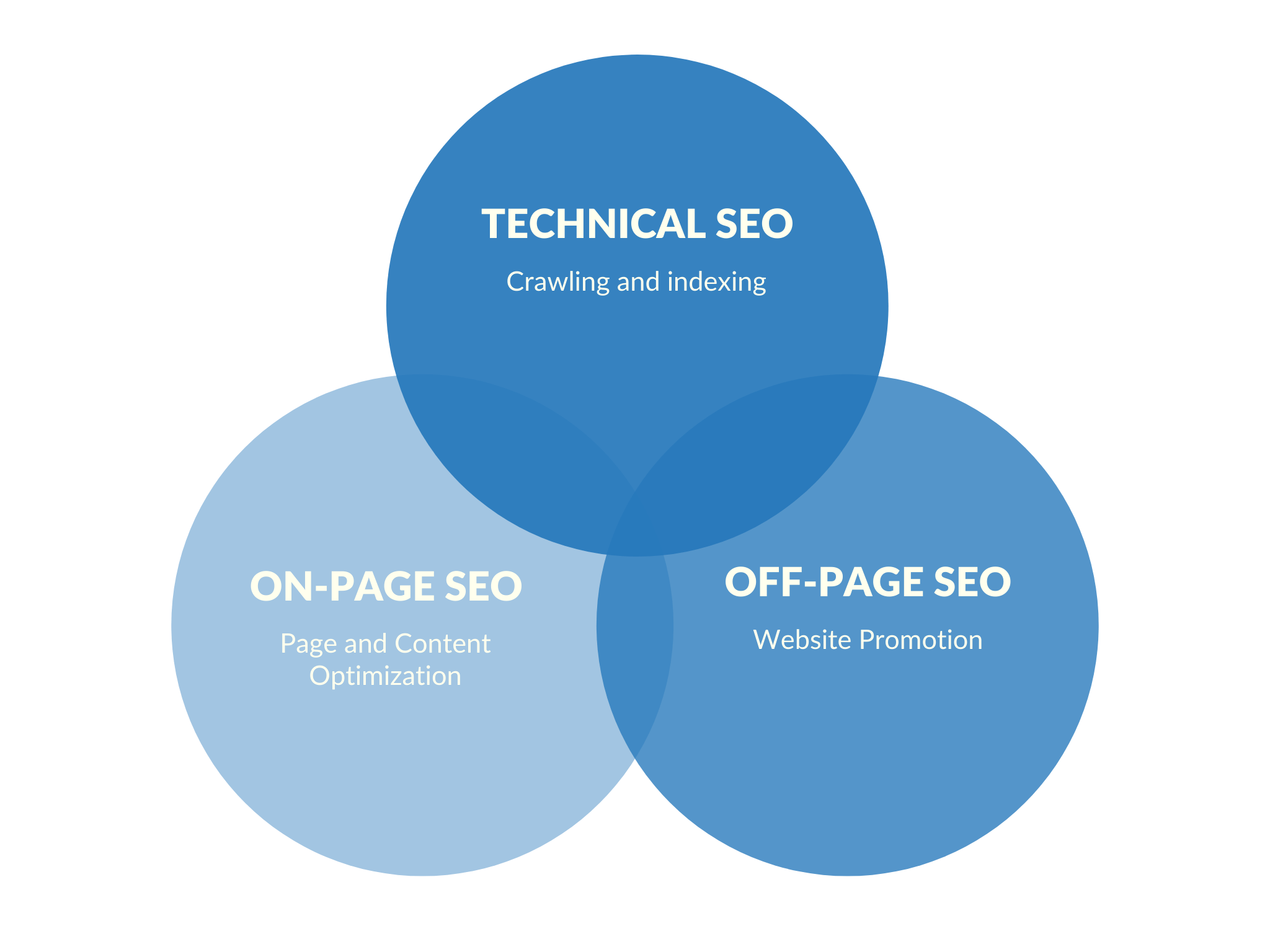
Each process is responsible to optimize your website for a number of parameters that will eventually lead to higher rankings and traffic.
SEO is important because the majority of search traffic is distributed to websites that appear in the first 5 positions of the search results. So, if you want to get traffic from search engines, you need to appear in the top positions for search terms related to your business.
The best way to get started with SEO is to follow a step-by-step approach:
Step 1: Review your technical SEO and make sure that search engines can access and index your content without any problems. This is important since any issues at this stage will be catastrophic for your efforts.
Step 2: Optimize your content for search engines. In Step 4 above, you will create content that satisfies the needs of the user. Before publishing, you need to make sure that it’s SEO optimized.
This means, giving the right signals to search engines (through your titles, descriptions, headings, etc) to help them understand your content better.
Step 3: Promote your website and content. One of the most important SEO ranking factors is how other websites on the Internet ‘think’ of your website. If other relevant websites trust your website and they express this through a backlink, this is a strong signal to Google that your website deserves to be on the top positions.
If SEO is something that you haven’t done before for your website, the best way to approach this is to add it to your digital strategy and assign this task to SEO experts.
You can also use the resources below to learn more.
Resources to Learn More about SEO
- SEO Checklist – The most comprehensive SEO checklist you can find online. Follow the checklist to fully optimize your website for search engines.
- SEO Course – The only SEO Course you’ll ever need to read to learn SEO.
6. Explore paid advertising channels
When you start an online business, you know in advance that a large portion of your marketing budget will be allocated on PPC marketing (paid ads).
But, not all PPC platforms are the same. Based on your previous analysis (steps 2 and 3 above), you need to choose which platforms are more suited for your audience.
You can use the table below to get an idea of how the user profile looks for the most popular social networks.
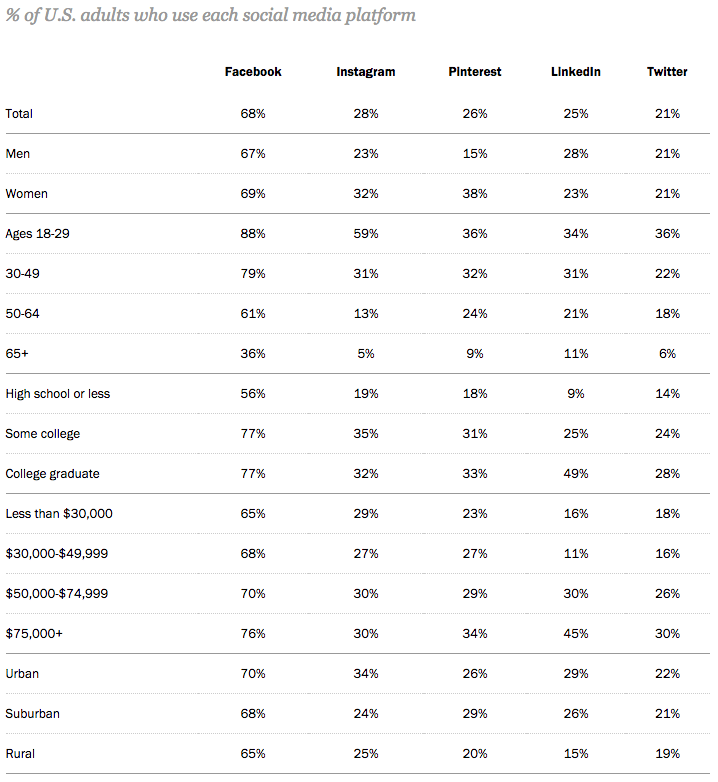
For example, if you have an eCommerce website selling directly to consumers (B2C) then Facebook is probably a good choice. If on the other hand, you are targeting Business executives, then LinkedIn is more appropriate.
Run Pilot Campaigns First
The best way to find out which platforms to incorporate in your digital marketing strategy plan is to run pilot campaigns.
A pilot campaign will not waste your budget and at the same time, it will give you enough data to make an informed decision.
A common mistake made by digital marketers is to blindly allocate all their budget on one channel because it’s the trend without testing or considering all of the available channels they can use.
Here is a list of the most popular advertising platforms you can use to reach your target audience:
Facebook Ads – ideal for all kinds of businesses. Works better for B2C. The best platform to raise brand awareness.
Instagram Ads – suitable if you want to reach a younger audience.
Twitter Ads – Business oriented. Great for informing your community of updates.
Linked Ads – Strictly for business-related advertising. Use it to reach decision-makers.
Google Ads – The most reliable platform to get targeted traffic to your website through paid search ads.
Google Display Ads – Use it for retargeting purposes and to reach your audience in the various Google products (YouTube, Gmail) and thousands of websites that participate in Google AdSense.
Bing Ads – Not as powerful as Google but a good alternative to get more search traffic to your website.
7. Use email marketing segmentation and automation
The end goal of a digital marketing campaign is to generate more revenue for a business. But in order to get to your ultimate goal, you first need to consider micro-conversions.
Micro-conversions are actions taken by users that are part of the funnel that leads to sales.
For example, while one of my goals is to sell my digital marketing course, an intermediate goal is to get people to subscribe to my email list (micro conversion).
I consider this an important step because I know from my statistics that a large percentage of people that subscribe to my list, will eventually convert.
The same concept can be applied to any business or product. You need to give incentives to users to sign up for your email list and then send them personalized emails that will help them make the final decision, which is to convert by buying your products or services.
An important element to make this work is segmentation and automation.
With email segmentation, you segment your list into groups of people that share the same interests and send them customized content.
For example, people registering to my list to download the SEO Checklist will get different email content than people who register to receive my posts updates.
If email marketing is a new concept for you, then you can realize that it involves a lot of work and that’s where email automation comes into play.
Here is a visual example of how email automation works.

With email automation, you can orchestrate the whole process to run without intervention and manual work. Your job is to set up the automation campaigns, monitor their performance, and take corrective actions.
In addition to micro-conversions, email marketing is a great way to raise brand awareness and build a community around your brand. This is something that can positively influence the performance of all your digital marketing campaigns.
Resources to Learn More About Email Marketing
8. Take advantage of new traffic sources
A complete digital marketing strategy should not only take into account the traditional online marketing channels but should also cater to new digital marketing strategies that rise to the surface.
To be more precise, at the time of writing this post, there are a number of new channels that you can explore like:
- Google Discover Ads
- Google Shopping Search
- Google Shopping Ads
- Tik-Tok
- Google Keen
- Optimizing your content for voice search
- Optimizing your content for Google rich snippets
These channels are new and most probably less competitive than established channels. This means you can get better results at a lower cost.
Will these help your strategy? The only way to find out is to test them by running pilot campaigns (as explained above).
9. Use retargeting and personalization
So far, all of the above strategies are related to how you can reach more people but it’s equally important to follow-up on users that already know your brand, but are not yet customers.
This is known as ‘retargeting’ or ‘remarketing’. With retargeting, you can show specific ads to users that visited your website (or social network page) but did not convert.
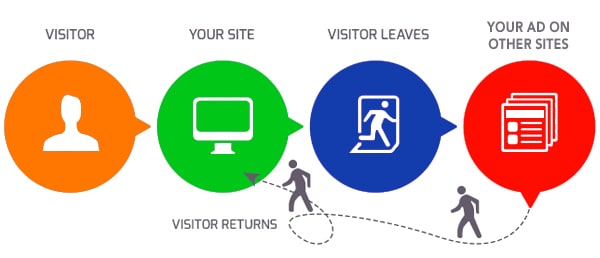
It’s a very powerful technique that has higher conversion rates and less CPA (cost per action) than other marketing techniques.
The ‘marketing rule of 7’ (established in the 1930s by marketers), states that prospects are more likely to convert if they see or hear an ad, at least 7 times.
Unsurprisingly, it is a rule that is applicable today, and remarketing is the way to implement this.
The most popular platforms to run remarketing campaigns are Facebook and Google Display Network.
The concept is simple. You connect your website with Facebook and Google by adding a piece of code provided by the platforms.
You then create custom audience lists that include the people who visited your website but did not convert.
You then create campaigns and ads that are shown to these users as they browse Facebook or visit other websites on the Internet.
To make remarketing more effective, you can also add the element of personalization. Instead of treating all visitors as one group, you can add rules to show different ads to people based on the actions they took on your website.
For example, you can create a retargeting campaign for people that added an item to their shopping cart but did not checkout. To give them an incentive to come back and finish the process, you can offer them a discount via coupon code.
As a matter of fact, retargeting should be a strategy to include in your digital marketing plan from the early stages. This way you’ll maximize the return for any money spend on paid ads or SEO.
10. Work on conversion optimization
Another area that needs to be part of your overall marketing strategy is conversion optimization.
I can tell you from experience, that 90% of digital marketing campaigns focus on how to get traffic and forget about conversion optimization.
What is conversion optimization? In simple terms, conversion optimization is the process to follow to optimize your website so that a higher percentage of your visitors will perform the desired actions.
This starts with your website design, content, landing page optimization, email signups forms, shopping cart, checkout process, and other elements that contribute (directly or indirectly) to conversions.
One of the techniques to use is A/B testing. By applying a/b testing principles you can measure the effect on conversions by carefully changing parts of your website or sales funnel.
I’ll not go into the details on how to perform A/B testing or conversion optimization (you can follow the links in the resources below to learn more), but from a strategic point of view, it’s important to add conversion optimization activities in your digital marketing plan.
Here is an example of how a conversion optimization plan looks like:

You can add it as a step to be executed as part of a single campaign or as part of your general strategy review process.
What I advise my team to do is to review conversion optimization after a campaign is considered to be optimized in terms of traffic.
In other words, it’s better to try and optimize your campaign to get as many visits as possible with the lower cost and then start testing different landing pages, messages to see which one performs better in terms of conversions.
As a rule of thumb, when doing A/B testing, you should focus on specific changes so that you can accurately measure their effect on conversions.
Resources to Learn More About Conversion Optimization
11. Evaluate and revise your strategy
Digital marketing is a highly dynamic industry. ‘Rules’ change all the time and it’s extremely important that you evaluate and revise your digital marketing strategy to stay current and relevant.
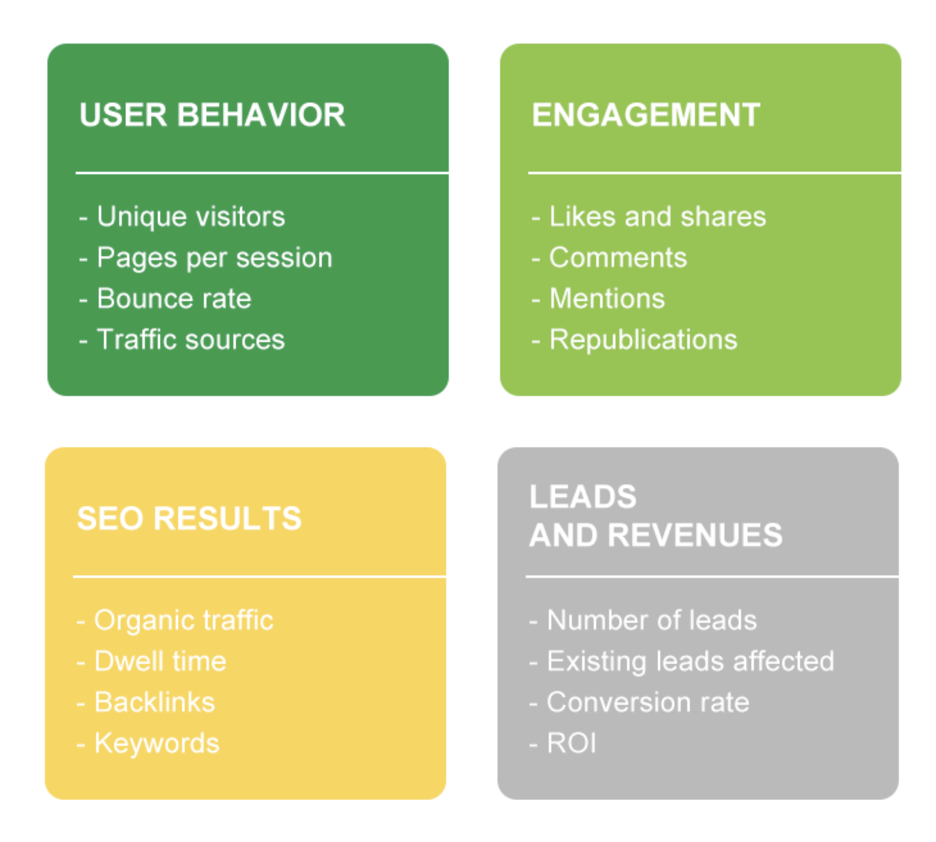
The best way to evaluate your campaign is to do it based on KPIs and other metrics. The most important metrics for any kind of digital marketing campaign are:
- Number of website visits
- Cost per visit
- Cost per conversion
- Click-Through Rate
- Number of Conversions
- Number of micro-conversions
- Time on site
- Bounce rate
- Number of social shares
- Number of comments
If you have a good analytics system in place and can track these for every campaign that is part of your strategy, then it will be easier to make informed decisions.
Don’t forget that part of your evaluation should be to look for new channels you can add to your strategy.
It’s always a good idea to take a look at your competitor’s strategies and identify which of their strategies you can include to your marketing mix.
Key Learnings
A digital marketing strategy is a plan that describes in detail how to use various digital marketing channels to satisfy your business objectives.
To create an effective digital marketing strategy, you start by defining your goals. Then through research, you identify the characteristics and needs of people to target with your campaigns.
Once you have this information, you translate that into content marketing assets, having always in mind the ‘intent’ of the user. Creating the right type of content that can satisfy the user’s needs, it’s a critical success factor.
Then you start with SEO. SEO is the most effective digital marketing channel but it’s not the fastest one. While waiting for your SEO to generate results, you can start testing paid advertising channels by running pilot campaigns.
Once you figure out which channels are more likely to work for the satisfaction of your business goals, you concentrate on those.
Besides generating traffic to your website, you also need to incorporate other strategies for converting traffic to customers such as email marketing, retargeting, and conversion optimization.
At regular intervals, you should evaluate and revise your strategy to include new traffic sources and trends.
